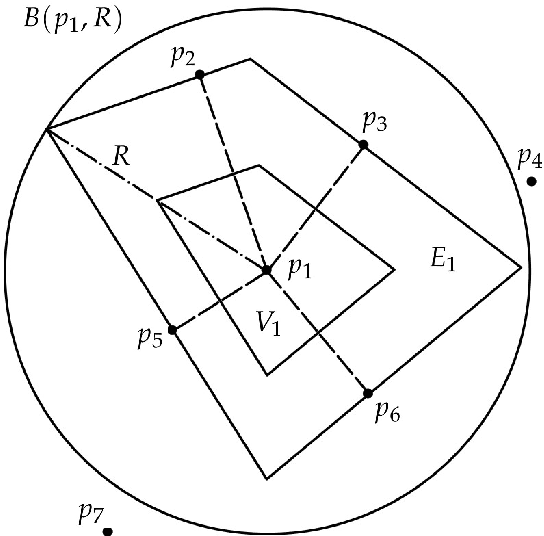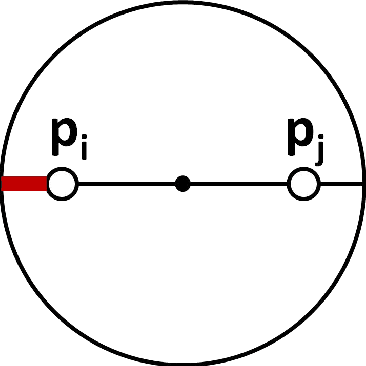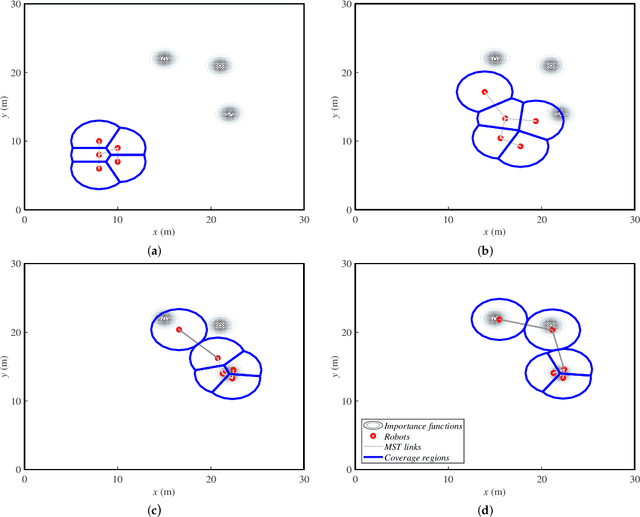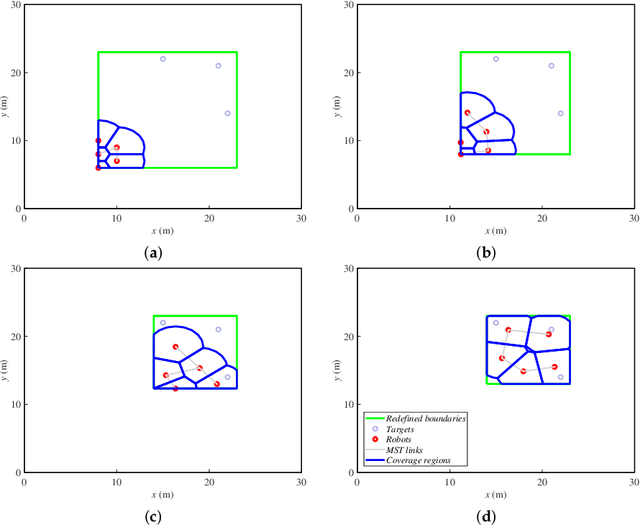Simultaneous Deployment and Tracking Multi-Robot Strategies with Connectivity Maintenance
Paper and Code
Mar 19, 2018



Multi robot teams composed by ground and aerial vehicles have gained attention during the last years. We present a scenario where both types of robots must monitor the same area from different view points. In this paper we propose two Lloyd-based tracking strategies to allow the ground robots (agents) follow the aerial ones (targets), keeping the connectivity between the agents. The first strategy establishes density functions on the environment so that the targets acquire more importance than other zones, while the second one iteratively modifies the virtual limits of the working area depending on the positions of the targets. We consider the connectivity maintenance due to the fact that coverage tasks tend to spread the agents as much as possible, which is addressed by restricting their motions so that they keep the links of a Minimum Spanning Tree of the communication graph. We provide a thorough parametric study of the performance of the proposed strategies under several simulated scenarios. In addition, the methods are implemented and tested using realistic robotic simulation environments and real experiments.
 Add to Chrome
Add to Chrome Add to Firefox
Add to Firefox Add to Edge
Add to Edge